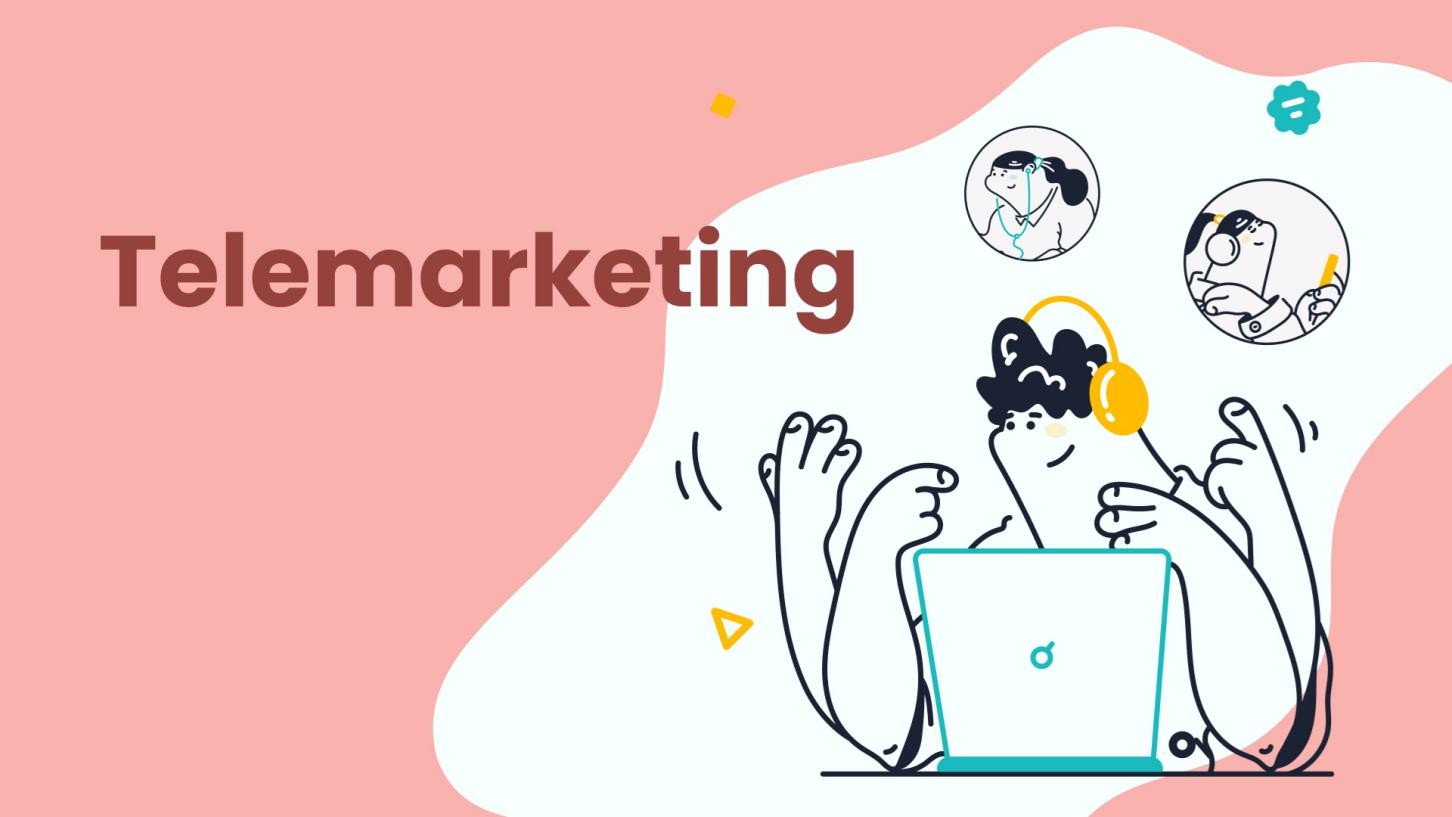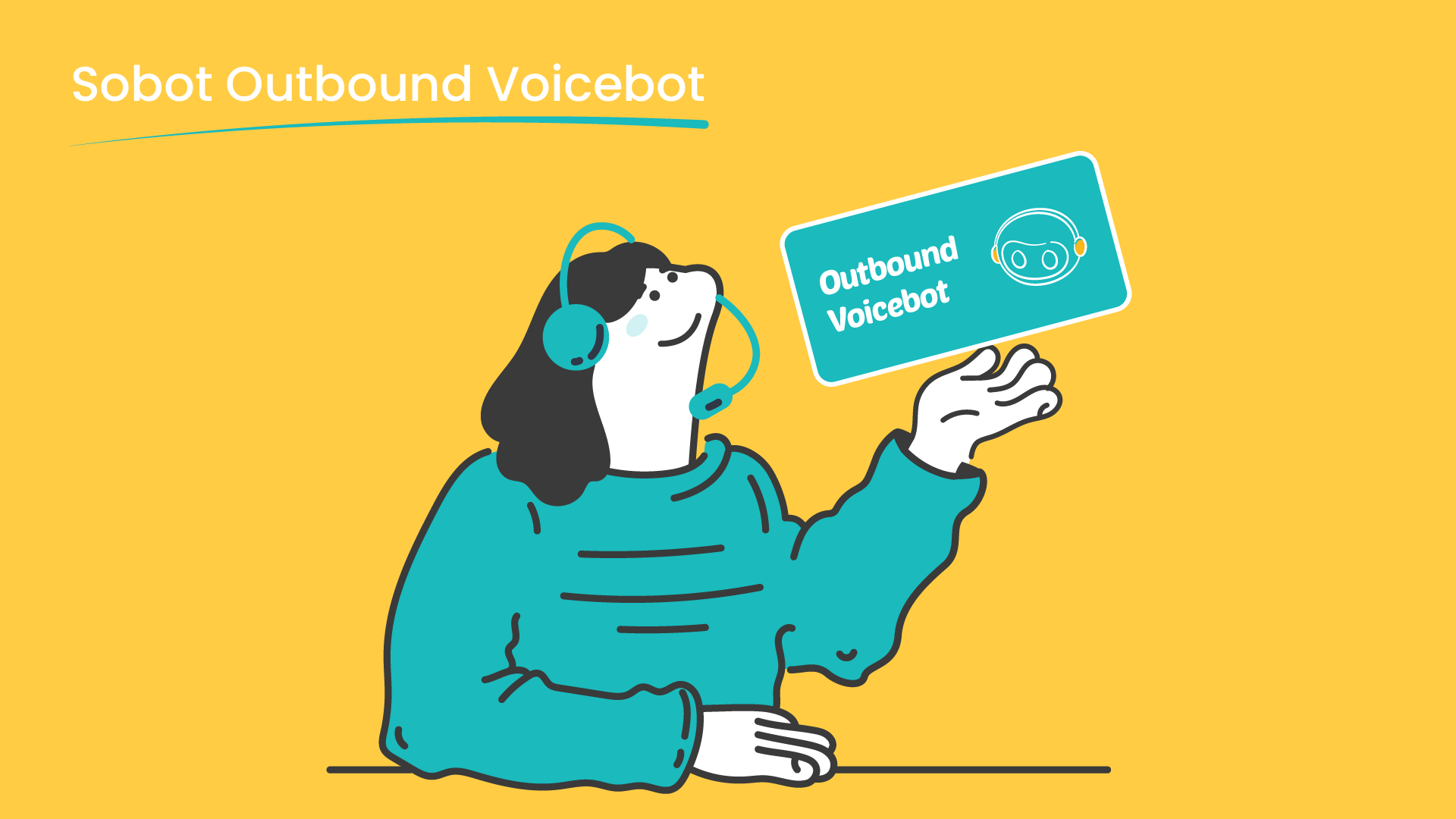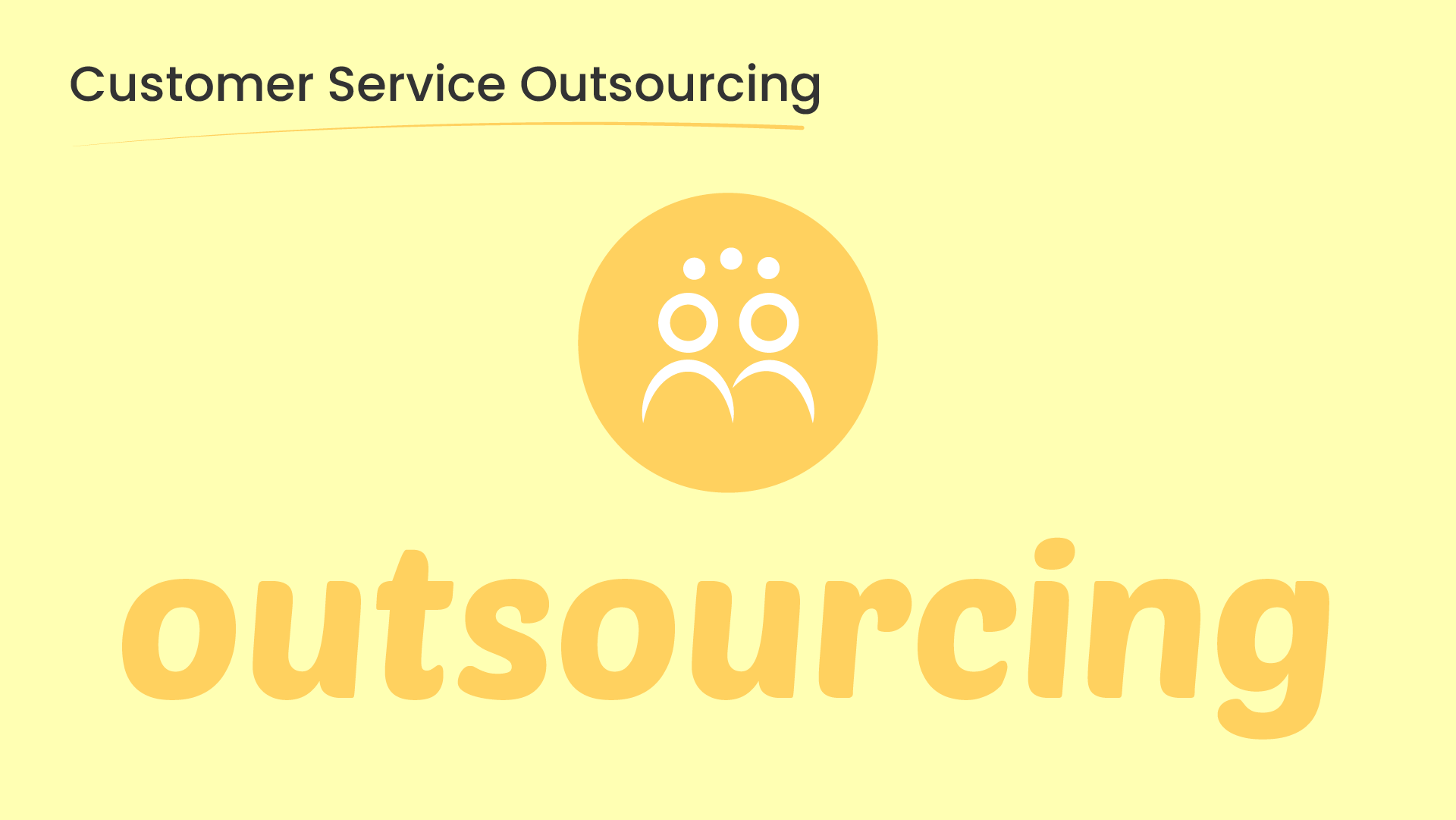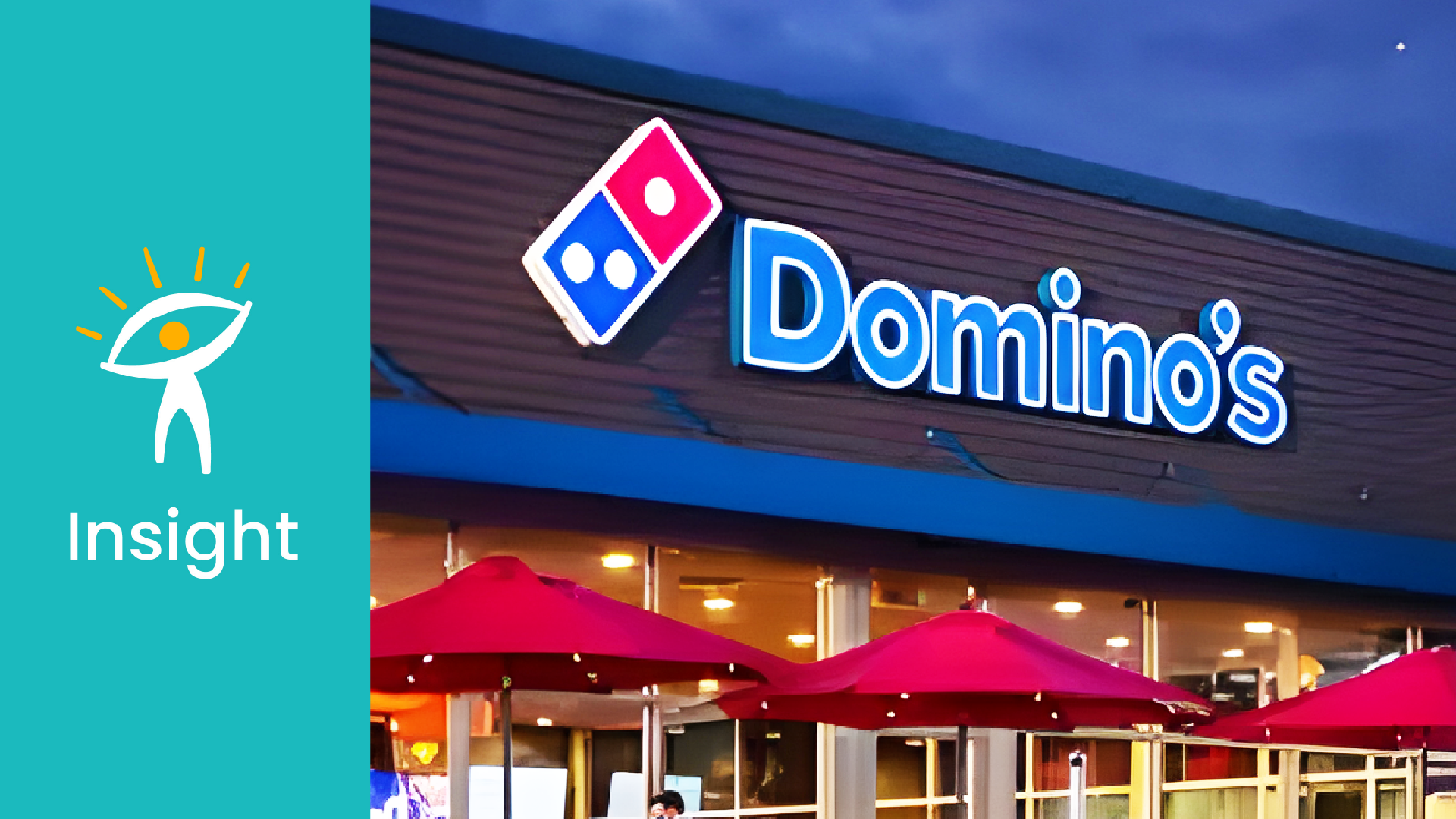What is Telemarketing?
Telemarketing remains one of the most efficient tools for customer acquisition and market expansion today. It involves direct marketing of products or services to potential customers via telephone or the Internet by telemarketers or auto-dialer robots. For B2C businesses that need rapid customer acquisition and promotion, or B2B enterprises that require precise reach to decision-makers, telemarketing serves as an irreplaceable direct sales method.
With technological advancements, AI is profoundly changing what telemarketing is. The future norm will be the collaboration of “human + AI” in telemarketing. So, what is telemarketing evolving into?
KEY TAKEAWAYS:
This comprehensive guide explores what is telemarketing calls in its modern context and how businesses can leverage this powerful marketing tool effectively while complying with regulatory requirements.
- Telemarketing is a method of direct marketing conducted via telephone.
- Telemarketing is categorized into Outbound and Inbound based on call initiation. Further divided into B2C Telemarketing and B2B Telemarketing based on customer type.
- Telemarketing offers an efficient way for customer development and brand promotion. It should be incorporated into marketing strategies.
- Challenges include regulatory compliance (e.g., in the US) and the risk of being regarded as spam calls.
- Telemarketing strategies vary based on business type, company development stage, and industry characteristics.
- AI technology is transforming the traditional operation and service models of telemarketing in an all-around way.
Main Types of Telemarketing
To effectively leverage telephone marketing, it’s crucial to understand its various forms, which are largely determined by specific business goals and the nature of the customer. A primary distinction can be made based on who initiates the call:
- Inbound Telemarketing: Customers proactively call the company, commonly seen in scenarios such as inquiries, complaints, after-sales service, and order processing.
- Outbound Telemarketing: The company proactively calls potential or existing customers, commonly seen in scenarios such as product promotion, market research, customer follow-up, and sales.
Beyond this inbound and outbound classification, telemarketing can also be refined by the type of client being served: either B2B or B2C.
- B2C Telemarketing: Promoting products or services to individual consumers. Most countries in the world have strict legislation and regulations regarding this type of telemarketing.
- B2B Telemarketing: Promoting products or services to other businesses. The regulation is generally more relaxed, but there are still compliance requirements.
What is Telemarketing vs. Cold Calling?\
Cold Calling specifically refers to an “outbound strategy” in telemarketing. It primarily targets potential customers who have not yet shown any interest in the product or service (i.e., completely unrelated potential customers). Cold Calling focuses more on the initial contact, while telemarketing covers a broader range of customer interactions and services.
What is Telemarketing vs. Telesales?
Telesales specifically refers to the direct sale of products or services via telephone. Telemarketing, on the other hand, encompasses a broader range of activities, including lead generation, customer service, and market research.
While telemarketing and telesales have different focuses, their boundaries are sometimes blurred in different industries or corporate cultures, allowing for interchangeable use.
To put it simply: All cold calling is telemarketing, but not all telemarketing is cold calling.
Telemarketing Benefits and Challenges
- 57% of C-level executives and VPs prefer communicating with sales reps by phone over any other channel.
- 69% of B2B buyers are open to telemarketing calls from new suppliers.
- Over 80% of sales directors say the phone is critical for outbound (Orum, The State of Sales Development)
- Out of 100 cold calls, an SDR can expect at least 2 to convert into warm leads.
- Cold calling outperforms email marketing, with a 5% higher response rate.
The most obvious benefit of telemarketing is its ability to engage in direct conversations with potential customers. It delivers a higher rate of immediate feedback compared to most digital channels. No matter the success rate of telemarketing advertising, it remains effective and should still be incorporated into your sales strategy.
However, the intrusive nature of telemarketing calls means that telemarketing businesses face multiple challenges, such as customer segmentation, resistance and high rejection rates, compliance and data privacy, labor costs and efficiency pressures, difficulty in measuring marketing effectiveness, and risks to customer experience and brand image.
This is why data-driven approaches and intelligent empowerment, which we collectively refer to as AI, can adapt to the trends of the times and play a significant role. (Please pay attention to the chapter on Technological Solutions for Conducting Telemarketing)
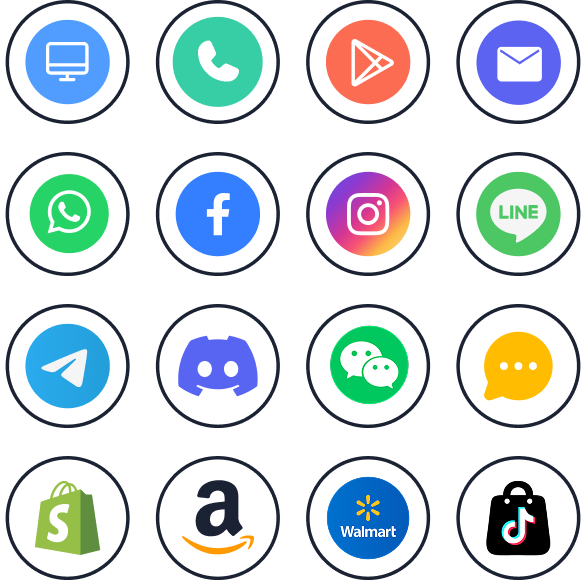
Global Telemarketing Regulations and Market Rules
Compliance with telemarketing sales rules is crucial for legitimate operations. The intrusive nature of telemarketing, coupled with its association with fraud and scams, has led to public resistance to this form of direct sales. As a result, many countries and regions have enacted laws to regulate the practices of telemarketers.
The United States and Canada have established national “Do Not Call” (DNC) registries. Callers offering goods or services for sale must comply with the DNC regulations. These regulations include restrictions on telemarketing calling hours by state, requirements for specific disclosures, and prohibitions against misrepresentations. This means that consumers registered on the DNC list can file complaints if they receive calls from telemarketers, which may result in substantial fines and sanctions for the telemarketing companies. However, B2B calls, charitable solicitations, and existing business relationships are exceptions.
Key U.S. Telemarketing Rules:
- Most forms of automatic dialing are prohibited.
- Political, charitable, and survey calls are exempt from the DNC list.
- Marketers must regularly (at least every 31 days) update their lists to remove DNC numbers.
- Violators may be fined up to $53,088 per call.
- Lists may only be used to prevent illegal telemarketing calls, not for any other purposes.
European Union (EU)
The EU’s General Data Protection Regulation (GDPR) provides a comprehensive framework for the processing of personal data, including data used for marketing purposes. GDPR emphasizes explicit customer consent (opt-in) and strong data protection measures. Most EU member states also maintain national Do Not Call (DNC) lists to restrict unsolicited telemarketing calls.
Official Regulation Link: EUR-Lex
India
India’s Telecom Commercial Communications Customer Preference Regulations (TCCCPR), regulated by the Telecom Regulatory Authority of India (TRAI), impose strict rules on telemarketing calls and SMS. These include mandatory registration of DNC lists, classification of commercial messages, and restrictions on calling hours.
TRAI continuously revising: Telecom Commercial Communications Customer Preference (Second Amendment) Regulations, 2025
Singapore
Singapore operates a national Do Not Call (DNC) registry and enforces strict telemarketing regulations under the Personal Data Protection Act (PDPA). Organizations must check the DNC registry before sending marketing calls or messages and provide recipients with an opt-out option.
Official Link: Do Not Call (DNC) Registry
South Africa
South Africa’s Protection of Personal Information Act (POPIA) tightly regulates telemarketing.
Official Link: Information Regulator (South Africa)
How to Conduct Telemarketing : Practical Strategies for Telemarketing
In today’s fast-paced digital era, businesses face unprecedented challenges in customer acquisition amidst intense market competition. Despite the emergence of new marketing channels, telemarketing remains a vital bridge between businesses and customers due to its direct, efficient, and personalized communication. So, how does a company or a third-party telesales company conduct telemarketing business? Is it possible to sign up for telemarketing calls free?
The answer is generally no; professional telemarketing services usually require resource investment.
To successfully implement telemarketing, the following key steps are indispensable:
Simple Steps for Telemarketing Implementation (Non-Strict Order)
- Define target audience and objectives
- Develop compelling scripts and talking points
- Choose appropriate technology platforms
- Train telemarketing staff thoroughly
- Implement compliance monitoring systems
- Establish performance measurement metrics
However, telemarketing isn’t a one-size-fits-all strategy. Its core approach needs to be flexibly tailored to your target customers, business development stage, and product characteristics. To gain a deeper understanding of telemarketing practices, we can analyze scenarios across three dimensions.
1. Different Business Types: B2B vs. B2C
(1) B2B Telemarketing
Communication Style: Conversations are usually more professional and rational, focusing on business pain points, Return on Investment (ROI), and customized solutions. The typical contacts are corporate purchasing managers, executives, or technical leads.
Script Design: Emphasizes professionalism, value propositions, and building trust. Scripts may include industry-specific terminology and case studies.
(2) B2C Telemarketing
Communication Style: Conversations tend to be more emotionally driven, highlighting product benefits, promotional offers, convenience, and how to meet individual needs. The direct contact is the end consumer.
Script Design: Concise and clear, emphasizing selling points and urgency. May include promotional information and calls to action.
Here to explore more about B2B vs. B2C E-Commerce: Differences in Success
2. Different Business Development Stages
A company’s life cycle stage significantly influences its telemarketing strategy.
- Startup Phase: Focus on market research, brand awareness, and initial customer acquisition. What does a telemarketer do at this stage? They often focus on information gathering and screening prospects to build a customer database.
- Growth Phase: Expand the customer base and improve conversion rates. It is recommended to segment customers through data analysis, optimize scripts, and conduct differentiated marketing to enhance marketing efficiency and customer satisfaction.
- Mature Phase: Concentrate on customer retention, value-added services, and brand loyalty enhancement. It is suggested to strengthen customer stratification management and combine follow-up visits, care and cross-selling to create a highly sticky customer group.
3. Different Industries
The role and specific execution of telemarketing vary widely across different industries. Let’s look at e-commerce retail, finance, and lifestyle services as examples.
(1) Retail Industry
Order confirmation and delivery notifications, promotional announcements, abandoned cart recovery, post-purchase follow-ups for satisfaction surveys
Characteristics: Primarily B2C, fast-paced communication, emphasizing offers and convenience.
(2) Financial Industry
Product recommendations, information confirmation, risk alerts, customer service and complaint handling, overdue payment collection
Characteristics: Both B2C and B2B, highly regulated with strict compliance requirements, emphasizing professionalism and trust, and involving sensitive information.
(3) Lifestyle Services (e.g., Education/Training, Home Services, Beauty/Hair Salons)
Course/service inquiries and bookings, promotion announcements, renewal reminders, event promotions, membership recruitment, and customer satisfaction follow-ups
Characteristics: Primarily B2C, focusing on service experience and personalized recommendations.
Technological Solutions for Conducting Telemarketing
- By 2025, 75% of B2B companies will use AI to enhance traditional telemarketing.
- AI ensures a 98% accuracy rate in verifying sales call numbers.
- Organizations using gen AI agents see a 14% higher issue resolution rate and 9% faster problem-solving per hour. (McKinsey)
To put these strategies into practice, robust technological support is essential. After all, efficient, compliant, and intelligent telemarketing can’t be achieved by human effort alone. Modern telemarketing call center operations require more comprehensive and efficient technology solutions.
By 2025, we’ll see enterprises and their marketers actively adopting both traditional and generative AI, which will unlock new possibilities for telemarketing.
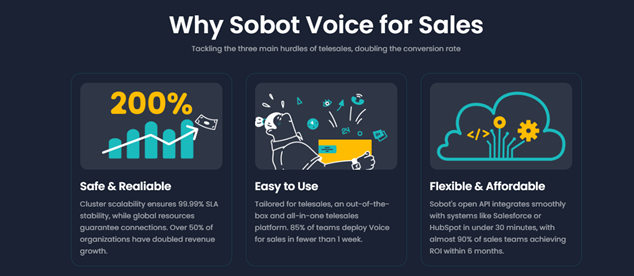
Sobot is dedicated to providing businesses with leading telemarketing technology solutions, empowering them to stand out in fierce market competition. The core advantages of Sobot’s solutions are evident in several key areas.
1. Internet-Driven Product Experience: Simple, User-Friendly, and Rapid Deployment
Say goodbye to outdated and rudimentary traditional telemarketing call center products! As a leading internet software brand, Sobot prioritizes user experience with a product design that is clean, intuitive, and incredibly fast to deploy. Businesses can get started quickly without complex configurations, significantly boosting their marketing efficiency.
2. Human + AI: Doubling Efficiency Through Human-Machine Collaboration
Sobot offers both reliable agent calling platforms and robust AI capabilities. This includes voice robots (outbound and inbound), and agent assistance features like service summaries and intelligent function creation. Businesses can flexibly combine different products and calling methods to suit various scenarios.
3. Omnichannel Customer Contact Center Solutions
Sobot goes beyond just calling functions and provides a complete customer contact center solution. We also deliver integrated support services and resources like online communication platforms, social media channels, SMS platforms, and even telephone lines and numbers. These components seamlessly connect with our calling functionalities to build a full, closed-loop customer communication system.
No matter what is telemarketing’s ultimate goal, whether it’s driving sales growth, enhancing customer experience, or ensuring operational compliance, Sobot can tailor the most suitable intelligent solutions for you. Welcome enterprises with the need to contact us and embark on a new chapter of intelligent marketing.
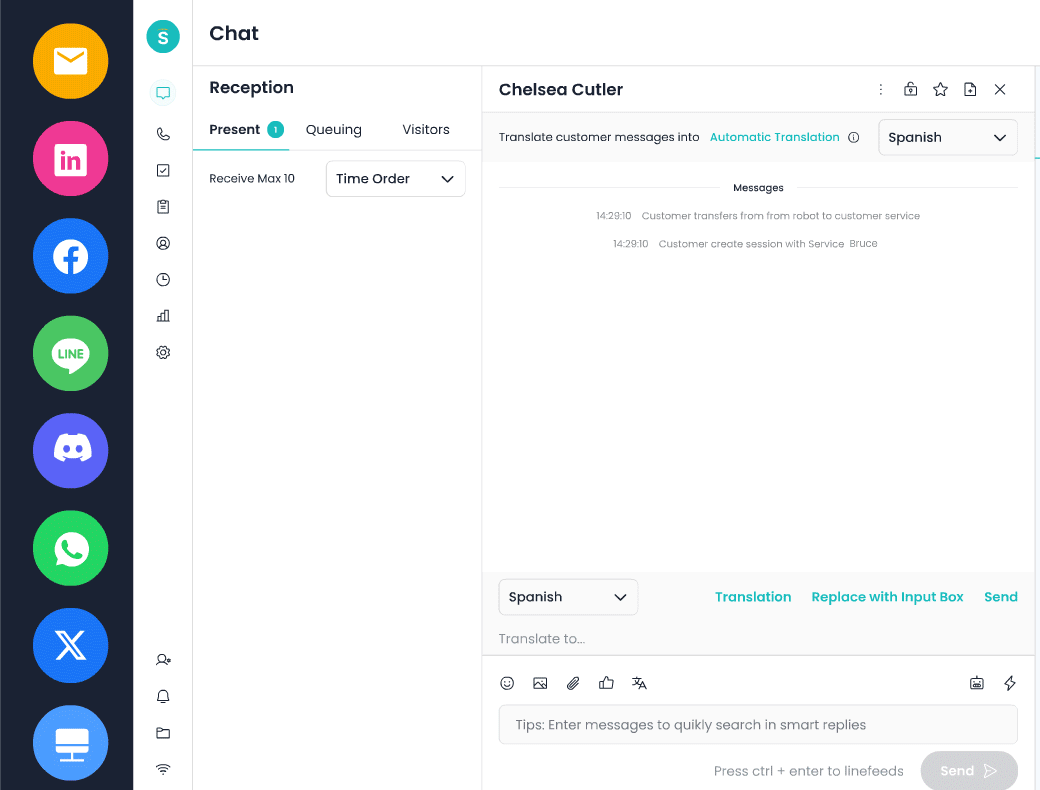
FAQs
How can avoid telemarketing calls be considered spam?
To avoid having telemarketing perceived as spam calls, businesses and telemarketers should take a comprehensive approach, focusing on compliance, content, frequency, and user experience.
For example, strictly adhere to laws and regulations as well as the “Do Not Call” list policies, clearly identify yourself and state the purpose of the call, avoid calling during users’ rest hours or repeatedly dialing the same number at high frequency, and optimize your scripts and messaging.
Never engage in misrepresentation or high-pressure tactics.
How is the effectiveness of telemarketing measured and optimized?
Key metrics include conversion rates, call-to-lead ratios, average call duration, customer satisfaction, and revenue per call. Optimization involves A/B testing scripts, analyzing recordings, ongoing training, and leveraging AI insights.
More key metrics can be found: Detailed KPIs for Call Center Operations
What are the new intelligent trends in telemarketing systems in 2025?
2025 sees increased adoption of AI-powered voice recognition, real-time sentiment analysis, predictive dialing systems, automated follow-up sequences, and integrated CRM platforms. Telemarketing technology will become more intelligent, integrated, and personalized.
These are also the strengths of the various customer contact solutions offered by Sobot. We welcome you to contact us for a free demo.
In the era of AI and automation, what irreplaceable value do human agents still offer in telemarketing?
Human agents provide emotional intelligence, complex problem-solving, relationship building, cultural sensitivity, and the ability to handle unique situations that require creativity and empathy—qualities that remain essential for building trust and closing high-value deals.

